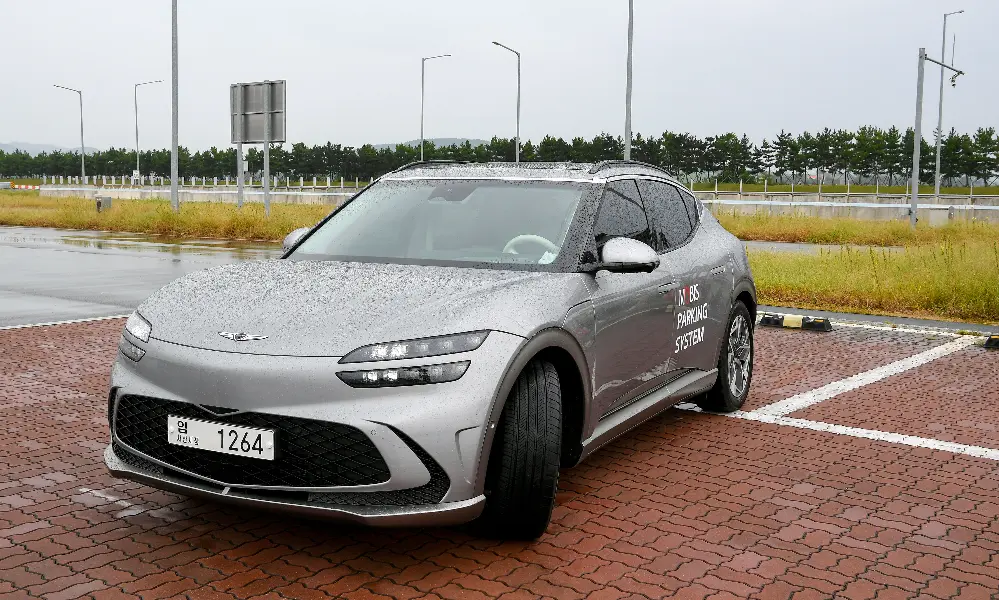The relentless growth of urbanization and technological advancements has given rise to autonomous parking technology, promising a stress-free parking experience. As cities become more congested and parking challenges escalate, innovative solutions are transforming this once mundane task into a seamless and efficient process. In this article, we explore the intricacies of autonomous parking, its benefits, challenges, and its pivotal role in shaping the future of mobility.
What is Autonomous Parking Technology?
Autonomous parking technology refers to systems that enable vehicles to park themselves without human intervention. Unlike traditional parking aids like sensors and cameras, this cutting-edge solution leverages artificial intelligence (AI), advanced sensors, and vehicle-to-infrastructure (V2I) communication to execute precise parking maneuvers. These systems aim to eliminate the stress and errors associated with manual parking.
The Growing Need for Stress-Free Parking Solutions
With the global population increasingly migrating to urban centers, parking has become a significant challenge. Drivers spend countless hours searching for parking spaces, leading to increased fuel consumption, traffic congestion, and stress. Autonomous parking addresses these issues by streamlining the process, saving time, and reducing environmental impact.
The Evolution of Autonomous Parking Technology
From Assistive Systems to Full Automation
The journey of autonomous parking began with basic assistive technologies such as rear-view cameras and ultrasonic sensors. Over the years, advancements in AI, machine learning, and sensor technologies have propelled the evolution toward fully automated systems.
Key Innovations Driving the Technology
- Sensors and Cameras: Advanced LIDAR, radar, and ultrasonic sensors enable precise detection of obstacles and spaces.
- AI and Machine Learning: These systems analyze real-time data to make informed decisions.
- IoT Integration: Connected parking systems facilitate communication between vehicles and infrastructure.
Milestones in Development
Leading automakers like Tesla, BMW, and Mercedes-Benz have introduced autonomous parking features in their vehicles. Recent breakthroughs include fully automated valet parking systems, where vehicles autonomously navigate parking garages.
How Autonomous Parking Works
Core Components
- Sensors and Cameras: Detect objects and monitor the vehicle’s surroundings.
- Communication Systems: V2I and vehicle-to-vehicle (V2V) technologies enable seamless interaction with parking infrastructure.
- AI Algorithms: These algorithms process data to execute accurate parking maneuvers.
- Cloud Integration: Real-time data storage and analytics enhance system efficiency.
Operational Process
- Vehicle detects an available parking space.
- System assesses the space dimensions and plans a parking path.
- Vehicle autonomously navigates to and parks in the designated spot.
Types of Autonomous Parking
- Fully Automated Valet Parking (AVP): Cars drop passengers off and park themselves.
- Semi-Autonomous Parking: Requires minimal driver assistance.
- Smart Parking Garages: Utilize advanced infrastructure for optimal parking management.
Benefits of Autonomous Parking
Convenience and Time-Saving
Drivers no longer need to search for parking spaces, drastically reducing time spent navigating crowded areas.
Enhanced Safety
By eliminating human error, autonomous systems minimize collisions and enhance overall safety.
Optimized Space Utilization
These systems can park vehicles more efficiently, reducing the space required for traditional parking lots.
Environmental Benefits
Autonomous parking reduces emissions by cutting down on idling and unnecessary driving while searching for spaces.
Challenges and Limitations
Technological Hurdles
- Ensuring reliability in adverse weather conditions.
- Overcoming data processing delays.
Infrastructure Requirements
- High costs of retrofitting existing parking lots.
- Dependence on smart infrastructure for operation.
Regulatory and Legal Concerns
- Determining liability in case of malfunctions.
- Establishing global standards and regulations.
Consumer Adoption
- Addressing trust issues among drivers.
- Making technology affordable and accessible.

Market Trends and Adoption
Global Market Overview
The autonomous parking market is projected to grow significantly, driven by urbanization and the demand for smart solutions. Europe, North America, and Asia-Pacific are leading in adoption rates.
Key Industry Players
Automakers and tech companies, including Tesla, Bosch, and Hyundai, are at the forefront of innovation. Collaborative efforts with municipal governments and infrastructure providers are accelerating adoption.
Smart Cities Integration
Autonomous parking aligns with smart city goals, offering efficient mobility solutions and reducing traffic congestion.
Future Directions and Innovations
Integration with Autonomous Vehicles
As self-driving cars become mainstream, autonomous parking will become a standard feature.
Enhanced Capabilities
Future systems will coordinate multiple vehicles and integrate with EV charging stations for added convenience.
AI and Machine Learning Advancements
Improved algorithms will enable real-time adaptability to complex parking scenarios.
On-Demand Parking
Autonomous systems will facilitate “drop-off and pick-up” solutions for ride-hailing and car-sharing services.
Ethical and Social Implications
Job Displacement
Automation may impact parking attendants and related jobs, necessitating workforce reskilling.
Accessibility
Ensuring inclusivity in design and affordability will be crucial for widespread adoption.
Privacy Concerns
Data security and privacy must be prioritized as these systems rely on real-time data collection and sharing.
Conclusion
Autonomous parking technology represents a significant leap toward stress-free mobility. Its potential to save time, enhance safety, and reduce environmental impact positions it as a cornerstone of the future smart city ecosystem. By overcoming challenges and fostering collaboration among stakeholders, this technology is poised to revolutionize how we think about parking.

 How to Ungel Diesel Fuel the Right Way This Winter
How to Ungel Diesel Fuel the Right Way This Winter  Budget Car Rental Tips for Saving Money in Singapore 2025
Budget Car Rental Tips for Saving Money in Singapore 2025  Why Mobile Tyre Replacement is the Future of Car Maintenance
Why Mobile Tyre Replacement is the Future of Car Maintenance  The Real Cost of Anime Car Wraps: What You Need to Know Before Going Full Itasha
The Real Cost of Anime Car Wraps: What You Need to Know Before Going Full Itasha  The Importance of Quiet Generators for Peaceful Sleep: Featuring the Jackery Solar Generator 2000 Plus
The Importance of Quiet Generators for Peaceful Sleep: Featuring the Jackery Solar Generator 2000 Plus  Why WEX Motorpass Is the Smart Choice for Business Fuel Management
Why WEX Motorpass Is the Smart Choice for Business Fuel Management  Top Choice for 4WD and Overlanding Rentals in Bozeman
Top Choice for 4WD and Overlanding Rentals in Bozeman  How Car Window Tinting Enhances Privacy and Protection on the Road
How Car Window Tinting Enhances Privacy and Protection on the Road  Certified Preowned Cars: Are They Worth It?
Certified Preowned Cars: Are They Worth It? 